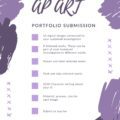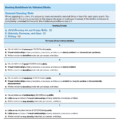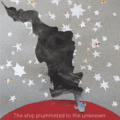
Do You Feel behind?
This time of the year always tends to feel a bit hard when it comes to AP art. You’ve been working on your sustained investigation for a solid five months; you know that you have two more months to go, and somehow that feels like a very long and very short amount of time. You […]
Your Art Portfolio & Direct Observation
When preparing your art portfolio for a college application, you may see the words direct observation. Many students are unsure of what this means. Direct observation means that you looked directly at an object or person and drew or painted what you observed. You might avoid direct observation because it’s more challenging than drawing from […]

Where to Find New Ideas
Where do ideas come from? Everywhere, they swirl all around you. The challenge is seeing them, catching them, and knowing which ones to let go of. We’re often so excited that we have an idea, that we start to put all of our energy into our first idea. First ideas are usually okay, but not […]

Preparing your Art Portfolio
Are you thinking about studying art or art education in college? Have you started to think about what it looks like to put together a portfolio that represents you and your work? While this does vary some from college to college the checklist below will help you start the process. Art Portfolio Basics Your portfolio […]

Are you Looking for a Mentor?
Are you a high school student that’s looking for someone to help you develop your ideas, organize your art portfolio, and to keep you motivated to create? Maybe you’ve already taken all of the AP classes, or you might not be interested in AP class, but really want to learn more about how to develop […]

Do You Have Enough Supplies to Share?
It’s a common pet peeve of many art teachers to have students from other classes sent to their room to ask for supplies. Can you relate? Before you say no, or get mad, here are a few questions to reflect on. Did you purchase the supplies or did the school? Are they consumable or non-consumable? […]

Understanding Size and Selected Works
In a previous post, we talked about how the size of your artwork can impact the meaning. Today I want to get more specific and talk about the size of your artwork if you’re working on an AP 2D design or AP Drawing portfolio. For AP portfolios you submit 15 digital images to the college […]

How do You Determine the Size of Your Work?
When creating works of art, do you spend time thinking about what size and the shape the piece should be, OR, is the size and shape of the work determined by the supplies that you have? Does Size Matter? It’s okay if you aren’t always putting a lot of thought into the size of your […]

How Materials Create Meaning
In the videos below we’ll explore examples of the role that materials and processes play when making a work of art. Before we watch the first video, grab your sketchbook and something to write with. I’m going to set a timer for one minute, write down as many materials and processes to create art with […]
